I fondly remember the first time I encountered a White Pomeranian at an animal charity event. Its vibrant energy and affectionate demeanor instantly captivated me. Renowned for their royal connections, especially since Queen Victoria’s adoption of a red Pomeranian, these dogs have a long-standing reputation as companions to nobility.
It’s a breed that’s often confused with the Japanese Spitz but it’s simply a Pomeranian that has a purely white coat. The White Pomeranian is identifiable by its slightly shorter muzzle — a key differentiating feature.
What truly sets the White Pomeranian apart is its combination of intelligence, alertness, and a larger-than-life personality packed into a small frame. These traits make them loyal and engaging members of any family. Understanding the White Pomeranian means appreciating both its physical beauty and its dynamic, spirited nature. Learn more below.
TABLE OF CONTENTS
- White Pomeranian Quick Summary
- Physical Characteristics of the White Pomeranian
- White Pomeranian Breed Origins
- White Pomeranian Puppy
- White Pomeranian Personality and Temperament
- Taking Care of a White Pomeranian
- White Pomeranian Health Issues
- FAQs on White Pomeranians
- A Blend of Elegance, Intelligence & Affection
White Pomeranian Quick Summary
Physical Characteristics of the White Pomeranian
From Adobe Stock
The White Pomeranian is a brilliant watchdog and will engage in a range of dog activities, but this breed just wants to be wherever their human is. It’s often described as fox-like in appearance as it has dark, bright eyes and small erect ears.
Further, White Pomeranians are a square breed with a short back. I’ve also noticed that the tail is high and lies flat on the back; these dogs are sturdy and medium-boned.
Size
These dogs weigh between 3 and 7 pounds. Their weight makes them ideal for those who prefer smaller, more manageable pets.
Regarding their height, White Pomeranians generally measure about 6 to 7 inches tall at the shoulder. This compact size is one of their defining physical characteristics. However, their thick, fluffy fur can give them a larger appearance. This aspect of their coat is distinctive and adds to their physical presence without actually increasing their size.
I find that these size attributes make the White Pomeranian a suitable choice for individuals or families living in apartments or smaller spaces.
Color
There is a large range of Pomeranian colors and patterns, but the White Pomeranian is as pure as snow.
No shading of cream or yellow, so the white Pom is exactly that. Their eyes are black, their nose is black and their pads are black. What a beauty!
Coat
The coat of a White Pomeranian is one of its most distinctive features. This breed has a double coat, consisting of a short, dense undercoat and longer guard hairs. The purpose of this unique coat structure is to protect them from various weather conditions. You’ll also notice their hair forms a distinctive ruff around the neck, giving them a regal, almost lion-like appearance.
Regarding shedding, White Pomeranians, like all double-coated dogs, go through two major shedding periods annually. However, it’s worth noting that shedding is a continual process for them. I always advise potential White Pomeranian owners to be prepared for regular grooming. This not only helps manage the shedding but also maintains the health and beauty of their stunning white coat.
White Pomeranian Breed Origins
I’ve always been intrigued by how breeds evolve, and the White Pomeranian is no exception. The fascinating history of the White Pomeranian is as rich as the breed itself. This delightful breed gets its name from its place of origin, Pomerania, a region in Northeastern Europe, now part of modern Poland and Western Germany. Originally, they were bred down from larger Spitz-type dogs to become the adorable, lap-sized companions we see today.
A significant chapter in the breed’s history unfolded when Queen Victoria developed a fondness for Pomeranians during a visit to Italy. Her affection for these dogs was not just a passing interest; it profoundly influenced the breed. After returning from Italy, Queen Victoria became an active breeder and exhibitor of Pomeranians, even showcasing them at Crufts in 1891, a notable dog show.
Perhaps one of Queen Victoria’s most lasting impacts on the breed was her role in their size reduction. It’s believed that under her breeding program, the size of the Pomeranian was reduced by up to 30 pounds, contributing significantly to the breed’s classification as a toy dog. This size reduction enhanced their appeal as ideal companions for those seeking a small, yet spirited and elegant pet.
Kennel Club Recognition
It is believed the White Pomeranian was first seen in the U.S. as far back as 1892, but they weren’t officially recognized by the American Kennel Club until 1900. This dog is also recognized by:
- Australian National Kennel Club
- Canadian Kennel Club
- Federation Cynologique Internationale
- New Zealand Kennel Club
- United Kennel Club
- The UK Kennel Club
It is clear this dog is loved the world over and they even have their own owners club.
For a range of reasons, the White Pomeranian may find their way into shelters. So if you are looking to bring a pooch into your home, you may consider adopting from Pawsitively Pom Rescue or Recycled Pomeranian Rescue.
White Pomeranian Puppy
From Adobe Stock
Newborn Pomeranian puppies are no more than a couple of ounces when born and they have the most rapid growth during the first month (usually doubling in size in just a few days).
Litter sizes vary but are generally between 1 to 5 puppies.
The price of a White Pomeranian puppy can range massively from $1,000 to $10,000 USD.
Typically, these dogs reach maturity by the time they turn one year old. The final size of a White Pomeranian depends on genetics, nutrition, activity level, and overall health. Hence, provide them with a balanced diet and regular exercise to ensure they grow healthily.
From my experience with toy breeds, I can say that White Pomeranians can be quite a challenge to housebreak. This is a common trait among smaller breeds. They require consistent training, patience, and a gentle approach. It’s important to start training early and use positive reinforcement techniques to encourage good behavior.
White Pomeranian Personality and Temperament
From Adobe Stock
This dog is active, but due to their small size, they are more suitable for city living.
Be mindful if you do have neighbors close by, some owners report their barking as excessive, but often this can be well-managed with some specific training.
Personality
White Pomeranians are little dogs with big personalities, often reflecting the temperament of their owners. In my time around these dogs, I’ve noticed that they’re like furry mirrors of their human companions. If you’re a confident and outgoing person, your White Pomeranian is likely to exhibit similar bold and extroverted traits. Conversely, if you’re more reserved and calm, your little Pom is apt to be more relaxed and laid-back. They’re incredibly adaptable in this way.
These dogs thrive on interaction, whether it’s playing, hiking, cuddling, or just lounging with their human family. Their lineage traces back to larger sled dogs, and they haven’t entirely forgotten this heritage. This shows in their protective nature. Although they’re small, they’re often alert and will promptly alert you to anything unusual in their environment.
Temperament
White Pomeranians are generally not aggressive, but like any dog, their behavior largely depends on their upbringing. Without proper socialization and training, they can become a bit snappy or yappy. It’s crucial to introduce them to a variety of experiences early on. This helps prevent the development of ‘small dog syndrome,’ a behavior often characterized by stubbornness and overprotectiveness.
It’s also important to manage their environment. While not particularly known for chasing after small prey, White Pomeranians, like all dogs, can exhibit unwanted behaviors if not properly supervised and trained. They make excellent house dogs, but because they view many things as potential threats, it’s important to socialize them well with friends, family, and regular visitors like the mailman or delivery drivers.
Compatibility with Families
White Pomeranians can be quite adaptable. They generally get along well with other pets and children, especially if they’re raised together. However, their small size and delicate nature make them better suited to families with older children who understand how to interact gently with toy breeds.
Toddlers and very young children might unintentionally play too rough with a small dog like a Pomeranian, which could lead to accidents. Pomeranians do form strong bonds with their human families and can be a bit wary of strangers. This wariness underscores the need for regular and varied social interactions to help them become well-adjusted, sociable pets.
Taking Care of a White Pomeranian
From Adobe Stock
Feeding
When it comes to feeding a White Pomeranian, the quality of the dog food is paramount. I always recommend choosing a high-quality brand that’s specifically formulated for small breeds. These formulations are designed to meet the unique nutritional needs of smaller dogs like Pomeranians. The food should cater to their life stage – puppy, adult, or senior – as their nutritional requirements change as they age.
Portion Control
Portion control is crucial for White Pomeranians. Due to their small size, they need significantly less food than larger breeds. Overfeeding can quickly lead to obesity, which is a health risk I’ve seen too often in small breeds. To determine the correct portion size, I usually start with the guidelines provided on the dog food packaging and adjust as necessary based on the dog’s activity level and weight.
Feeding Schedule
Establishing a regular feeding schedule helps in managing their diet and weight. White Pomeranian puppies, with their higher energy and growth needs, should ideally be fed three to four small meals a day. As they mature into adulthood, two meals a day is usually sufficient. I discourage free-feeding (leaving food out all the time) as it can lead to overeating and weight problems.
Avoid Human Food
It’s important to be cautious with human food. Many common foods that are safe for humans can be harmful to dogs. In my experience, sticking to dog-specific treats is the safest route. Human foods like chocolate, grapes, onions, and anything containing xylitol are toxic to dogs and should be avoided completely.
Special Dietary Needs
Some White Pomeranians may have special dietary needs, such as allergies or sensitivities. I’ve seen cases where a special diet is necessary for health reasons. If your White Pomeranian shows signs of digestive issues or allergies, a consultation with a vet is essential. They might recommend a special diet tailored to your dog’s specific needs.
Fresh Water
Finally, ensuring that your White Pomeranian has constant access to fresh, clean water is as crucial as their food. Proper hydration plays a key role in their overall health. I always make sure that my dogs have fresh water available, especially after meals and playtime.
Grooming
Grooming a White Pomeranian is essential for their health and well-being because their luxurious double coat requires regular attention.
Coat Care
The fluffy coat of a White Pomeranian is one of their most striking features, but it also means they require frequent grooming. I recommend brushing their coat at least three to four times a week, if not daily, to prevent matting and tangles. Using a high-quality brush, like a slicker brush, helps to remove loose fur and distribute natural oils throughout their coat, keeping it healthy and shiny.
Bathing
Bathing your White Pomeranian every three to four weeks is generally sufficient. However, it’s important to use a dog-specific shampoo that’s gentle on their skin and coat. I always make sure to thoroughly rinse out all the shampoo to prevent irritation. After a bath, drying their coat thoroughly with a towel and a low-heat hair dryer helps to fluff up their fur and avoid any dampness in their undercoat.
Nail Care
Regular nail trimming is crucial for Pomeranians. Overgrown nails can cause discomfort and even lead to walking problems. I usually recommend trimming their nails every three to four weeks. If you’re not comfortable doing it yourself, a professional groomer or a vet can assist.
Ear and Eye Cleaning
Keeping their ears clean and dry is important to prevent infections, especially since Pomeranians are prone to ear issues. Checking and cleaning their ears weekly with a vet-approved ear cleaner is a good practice. Additionally, gently wiping around their eyes with a soft, damp cloth helps to remove any discharge and prevent tear stains.
Dental Care
Dental health is often overlooked in dog grooming, but it’s vital. Regular teeth brushing with dog-specific toothpaste helps to prevent tartar buildup and gum disease. I aim to brush my dogs’ teeth several times a week.
Professional Grooming
While regular home grooming is essential, taking your White Pomeranian to a professional groomer every few months can be beneficial. They can provide a thorough grooming session, including a haircut, which is especially helpful during the warmer months to keep your Pom comfortable.
Training and Exercise
Here are practical tips and strategies for training, exercising, and mentally stimulating your White Pomeranian,
Training
White Pomeranians are intelligent. They are sometimes difficult to house train so patience is a must, here are some of our favorite puppy training tips:
- Get into a routine as soon as possible
- Let them out first thing in the morning, after playtime, after mealtimes, and last thing before bed
- Take them to the same spot to go potty and praise them after they have
- Never interrupt the flow to praise, they’ll just get excited and forget what they were doing out there in the first place
- Wipe up accidents as soon as they happen and thoroughly clean and disinfect the area
The White Pomeranian responds to positive reinforcement and reward-based training. Hence, encourage the behavior you want to see and ignore or redirect the behavior you don’t.
On top of that, I encourage pet owners to manage the environment to avoid unwanted behavior. For example, don’t give them your slipper to play with if you don’t want them to chew shoes as they get older.
Exercise Requirements
Pomeranians are active breeds, but only in relation to their size. Hence, between 30 to 60 minutes of exercise per day is more than enough to keep this little pet happy and healthy. It would likely walk more though if that suits your lifestyle.
I also recommend keeping an eye on your pet when it’s in your backyard or puppy-proofing the space. It can escape through small holes and take a jaunt in the neighborhood. These dogs can also be mistaken for rabbits by large predatory birds.
Whilst they are trainable, they can be stubborn so it’s always best to walk your White Pomeranian on a leash.
White Pomeranian Health Issues
From Adobe Stock
While these fluffy companions bring immense joy and companionship, owners should be aware of the breed-specific health issues they might encounter. This knowledge not only helps in early detection but also ensures appropriate care and treatment. I’ll discuss a few common health issues that White Pomeranians may face, including their symptoms and causes.
Luxating Patella
Luxating patella is a common issue in toy breeds like the White Pomeranian. It occurs when the kneecap slips out of its normal position. I’ve seen this condition in various degrees; some dogs may experience occasional limping, while others might show a more persistent inability to extend their knee joint. Surgery can be a treatment option, but it’s not always necessary.
The cause of luxating patella can be genetic, or it can develop due to trauma. Symptoms to watch for include intermittent limping, unusual walking style, or sudden yelps of pain when moving. It’s essential to consult your vet if you notice these signs, as early intervention can make a big difference in managing this condition.
Tracheal Collapse
Another condition that I’ve come across in White Pomeranians is tracheal collapse. This issue involves the weakening of the windpipe, making breathing difficult. It’s more common in middle-aged dogs and can be either congenital or acquired over time.
Symptoms of tracheal collapse include a honking cough, difficulty breathing, or a blue tinge to the gums due to lack of oxygen. If your Pom shows any of these signs, a vet visit is crucial. They might recommend treatments ranging from lifestyle changes and medications to surgery in severe cases.
Black Skin Disease (Alopecia X)
Black Skin Disease, also known as Alopecia X, is a condition that affects Pomeranians. It’s characterized by bald patches and darkened skin. This condition is thought to result from a hormonal imbalance and a reduced production of melatonin.
Symptoms include gradual hair loss and hyperpigmentation of the skin. While it’s more of a cosmetic issue, it’s important to discuss it with your vet, as it can sometimes be indicative of an underlying health problem. Various treatments are available, depending on the severity and underlying cause.
FAQs on White Pomeranians
How much is a White Pomeranian?
A White Pomeranian from a reputable breeder could be as much as $4000. Typically, females cost more than males. Adults usually cost less than puppies, although not for successful show dogs. You might find a White Pomeranian at an animal rescue, where adoption fees typically range between $200 and $400.
Are White Pomeranians rare?
White Pomeranians are among the rarest of all Pomeranians. This is because there are many other colors in the bloodline that are more dominant. A breeder must focus purely on solid whites to produce one, and no other color must appear in the genes for at least 5 generations back.
Are White Pomeranians more expensive?
Pomeranian coats are a variety of colors and patterns, with solids typically more costly than multi-colored ones. Among solid coats, a rare color like white is more expensive than common ones like red and orange. But not necessarily more expensive than other rare colors such as lavender, blue, and especially black.
What is the average lifespan of a White Pomeranian?
White Pomeranians typically live between 12 to 16 years. Like with any breed, their lifespan can be influenced by their overall health, diet, exercise, and genetics. Providing regular veterinary care, a balanced diet, and plenty of love and attention can help ensure they live a full and happy life.
How often should I groom my White Pomeranian?
I recommend grooming your White Pomeranian at least three to four times a week, with daily brushing being ideal. Their thick double coat can easily mat and tangle if not regularly maintained. Additionally, they should be bathed every three to four weeks and have regular nail trims and ear cleanings.
Are White Pomeranians good with children?
White Pomeranians can be good with children, especially if they are raised with them or introduced to them at a young age. However, due to their small size, they’re better suited to families with older children who understand how to handle them gently. Supervision is always recommended when they interact with younger kids to prevent accidental injury.
Can White Pomeranians live in apartments?
Absolutely! White Pomeranians are well-suited for apartment living due to their small size. They don’t require a lot of space to be happy and are quite adaptable. However, they do need regular exercise and mental stimulation, so daily walks and playtime are essential.
Do White Pomeranians bark a lot?
White Pomeranians are known for their vocal nature. They tend to bark to express themselves or alert their owners. This can be managed with proper training and socialization. Teaching them commands like ‘quiet’ and providing enough mental and physical stimulation can help reduce excessive barking.
How do I train my White Pomeranian?
Training a White Pomeranian requires patience and consistency. They respond well to positive reinforcement techniques like treats and praise. Start with basic commands and gradually move to more complex ones. Consistent training sessions and socialization from a young age are key to raising a well-behaved Pomeranian.
A Blend of Elegance, Intelligence & Affection
With their fox-like face and pristine snow-white coat, these tiny dogs pack a vibrant personality that belies their size. They make exceptional companions for those who understand and cater to their unique needs.
Ideal for a variety of owners — from singles and couples to seniors, and especially families with older children who appreciate the special requirements of toy breeds — the White Pomeranian is a versatile fit. Their exercise needs are modest, making them well-suited for urban living. A daily routine of 30 to 60 minutes of exercise, which can include walks and play, is usually sufficient to keep them happy and healthy.
Their alertness and intelligence shine through in training sessions. Yet, they are just as content to be your calm, cuddly companion on a lazy afternoon. Ultimately, the White Pomeranian is a breed that demands little but gives much.
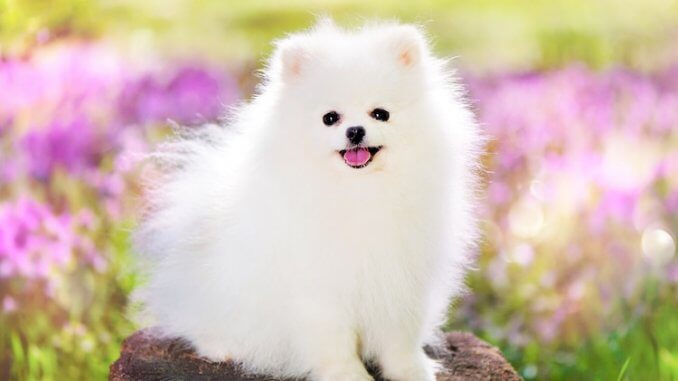
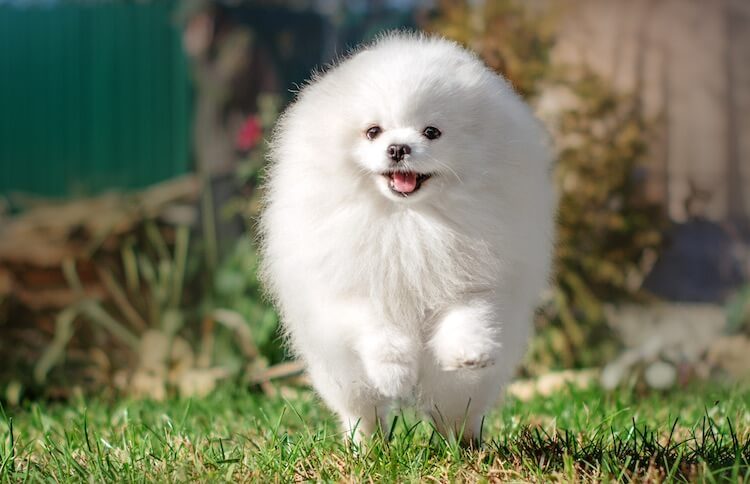
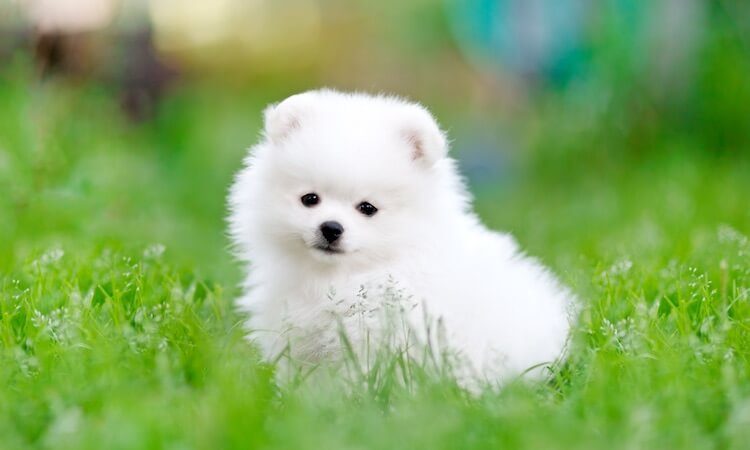
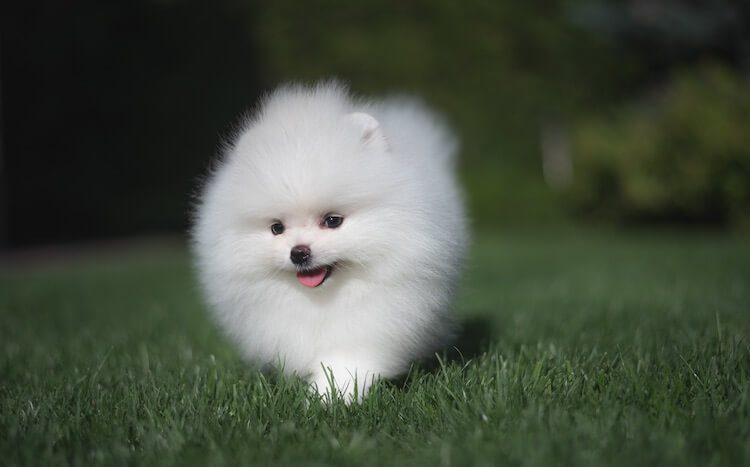
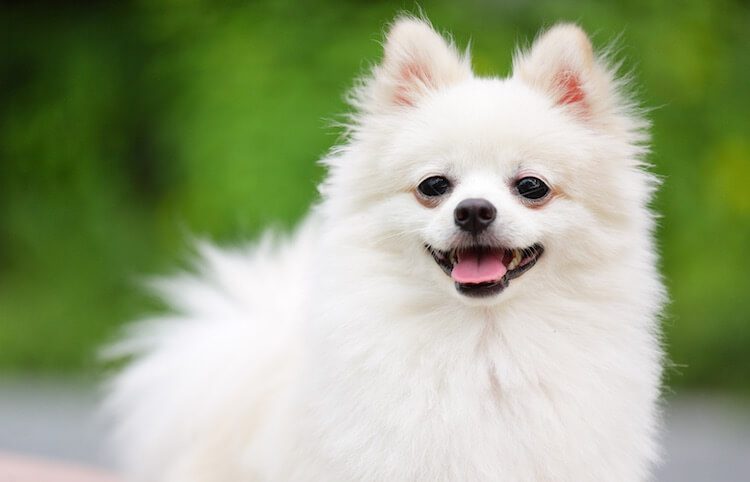





Hiiii I want this dog what is the price pls reply me
I’m looking to fined a female pommy and I want to know where are you located …please call me my phone number is 0401653711 thank you that will great..cheers
i would like to buy a pure white pomeranian pup, it must be pure breed and with documentation.
Please text for white pure Pom breed.
9172321992
I need a white pom Female pup
Reply @
[email protected]
I would love to buy a pure white male puppy
I want pamerian puppy in rs 500 only
My ant is looking for a pamerian for over 21 years now because her baby got stolend